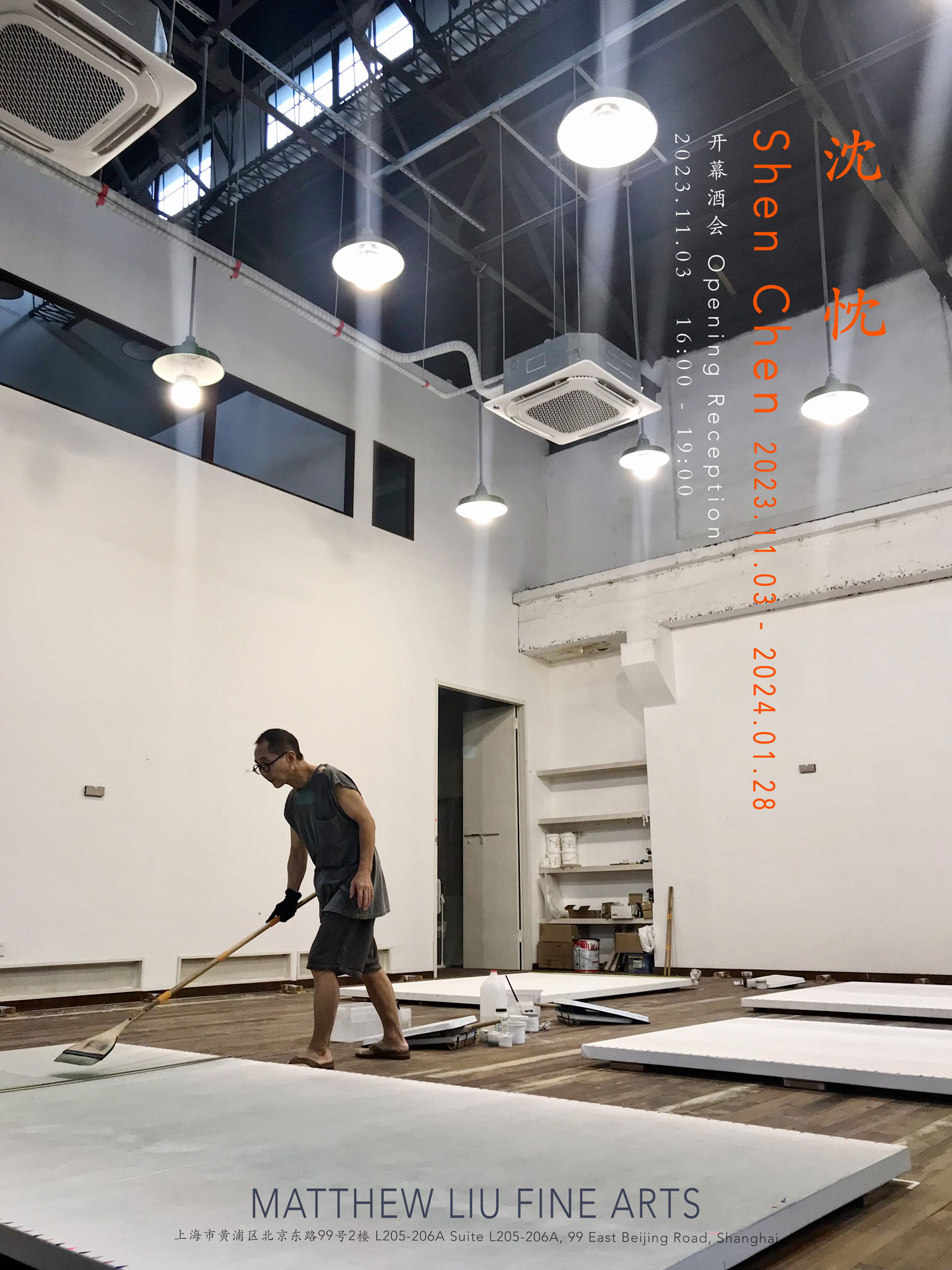展期 Period:
2023.11.3—2024.1.28
艺术家 Artist:
地点 Venue:
新闻稿 Press Release:
德⽟堂画廊荣幸呈现艺术家沈忱于疫情后的⾸个个展。本次展出汇聚了艺术家近两年间在纽约和上海孜孜不倦的抽象实验成果,包含了于画布上蕴含的深刻思考与精致的视觉提纯。作品延续了其⼀贯的极简主义美学格调,却在笔触、⾊彩、肌理上达⾄前所未有的层次感与张⼒。⽔墨笔触的痕迹隐现,⾊彩的微调蕴含,体现了艺术家对纯粹美学的执着追求,同时也传达了艺术家近年来对当下时局的细腻感悟。
沈忱是 1980 年代早期实验⽔墨的⼀位开拓者,但他的贡献在之后的 20 年⼀直被忽视。⽔墨的现代主义开始于五、六⼗年代的港台、⽇本及美国的亚裔 ,中国内地在 1970 年代末紧随其后,拉开了现代主义进程。沈忱在 1980 年代初就进⼊了⼀种更彻底的⽔墨抽象主义的探索。在那个资讯匮乏的年代,他反⽽具有⼀种创造性的天分和活⼒,在语⾔上迅速拉平了与亚洲现代⽔墨的距离。1988 年,在国内 85 新潮⻛起云涌之时,沈忱孤身来到美国,在潮流之外开始了⻓达 30 多年的抽象主义的纯粹探索。此时,⻄⽅抽象早已告⼀段落。1990 年代的⻄⽅,后现代主义业已结束。除了阿格尼丝·⻢丁(Agnes Martin)和汤布利(Cy Twombly)仍在⼀个狭⼩的缝隙进⾏探索之外,抽象艺术被认为不再有创造空间。但沈忱仍在从事着未竟的可能性⼏乎为零的抽象实验,事实上,他最终在东⻄⽅艺术之间⾛出了⼀条个⼈道路,创造了⼀种令⼈意外的新抽象语⾔。
早期训练所侵润的⽔墨中的笔触和墨⾊中的灰⾊概念,被沈忱选择为优于⻄⽅绘画但可以作为笔性和⾊彩现代性进⼀步推进的基础。由此,沈忱彻底切断了之前抽象⽔墨的⽂化现代性层次的探索,⽽是从笔性和灰⾊调的本体性出发,从事⼀种源于⽔墨但超越⽔墨定义的纯粹的抽象实验。这⼀转变的关键在于通过⽔性化的丙烯以及改良后的底纹排笔,以新的媒介⼯具来实现这⼀进程。从⽔墨到丙烯,这⼀转化并不被看作⼀种转向⻄⽅后与中国传统的断裂,⽽是看作⼀种通往普世现代性的抽象途径, 由美学上的⽂化视⻆转向绘画观念在笔性和⾊彩上的本体实验。这事实上同时超越了中⻄绘画未竟的现代主义。沈忱不仅越出了⽔墨的现代主义曾经的边界,事实上,同时越出了⻄⽅现代主义的抽象边界,其标志即进⼊了⼀种知觉抽象的视域,这⼀阈限的创造以及语⾔经验,即便⻄⽅画家抵达的亦为数不多。尤其在复⾊灰或复合⾊域的灰度向度等领域,沈忱创造了⼀种ᇿ有的抽象经验。这⼀抽象⽅式重新整合了中⻄体系中的绘画要素,使两者汇合于⼀个更深层次的纯粹视域。
本⽂经由作者朱其所著之原始⽂章进⾏编辑
Shen Chen was one of the pioneering artists of experimental ink painting during the 1980s. His contribution, however, had been largely overlooked in the 20 years that followed. Modernism of ink art began in Hong Kong, Taiwan, Japan and among Asian Americans in the US during the 1950s and 1960s, whereas China started the process of modernism in the late 1970s.
In the 1980s, Shen Chen had already entered into a more thorough exploration of abstract ink art. Although information was scarce at that time, his talented creative energy quickly closed the language gap with Asian modern ink painting. When the '85 New Wave was surging in China, Shen Chen came to the US in 1988 to begin his 30 years exploration of pure abstraction. At that time, Western abstract art
had already come to an end.
In the 1990s, postmodernism had declined in the West; abstract art was considered to be at a dead end with the exception of Agnes Martin and perhaps Cy Twombley, who were exploring in their own niche. Shen Chen, however, persisted in the almost impossible experiment of abstraction. In the end, he forged a personal path between Eastern and Western art and created a surprising new abstract vocabulary.
Shen Chen selected the brush strokes and the color gray from his early ink painting instead of Western painting as his starting point for modernizing brushwork and color. Completely breaking away from his former exploration of modern abstract ink painting, Shen Chen started with the intrinsic properties of ink brush and color gray, then progressed onto a pure abstract experimentation that was derived from ink yet went beyond ink. This transformation was accomplished by new medium and new tools, particularly water-based acrylic and improved row brushes.
The change from ink to acrylic is not a break from Chinese tradition after turning to the West. Rather, it is an abstract approach leading to universal modernity, a turn to painting concepts away from the cultural perspective of aesthetics as the basis for the experiments on intrinsic brush attributes and colors. This goes beyond the unrealized modernism of Chinese and Western paintings. Shen Chen not only transcends the previous boundaries of ink modernism, but he also transcends the abstract boundaries of Western modernism to enter into a visual field of perceptual abstraction. Indeed, not many Western painters are able to create such liminality and language experience.
Shen Chen has created a unique abstract experience, especially in the fields of composite gray and gradients of composite color gamut. In this abstract format, the essential elements of painting in both Chinese and Western systems are recombined together into a pure visual field of profound depths.
Written by Zhu Qi

